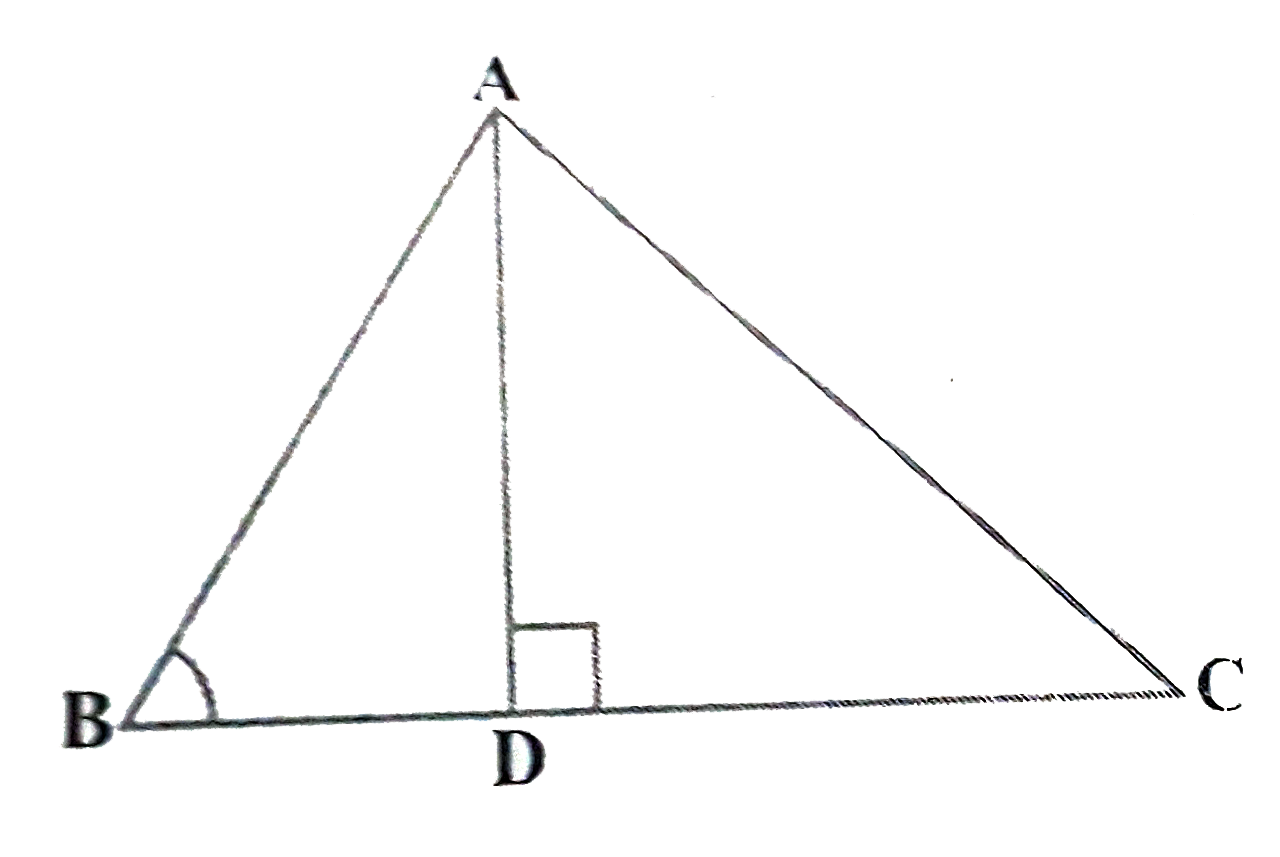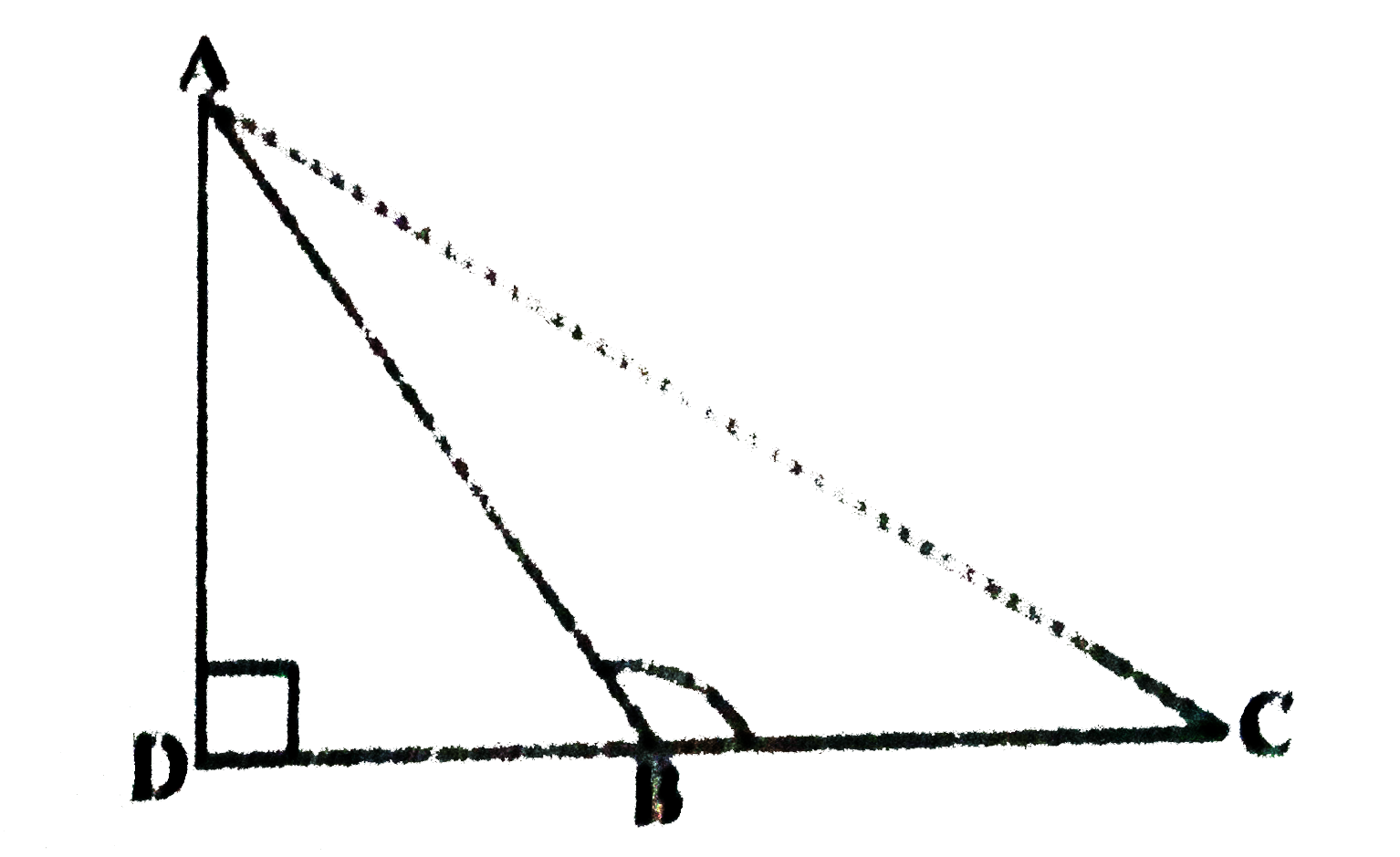In Figure, AD⊥BC and BD=13CD. Prove that 2CA2=2AB2+BC2
To prove that 2CA2=2AB2+BC2 given that AD⊥BC and BD=13CD, we can follow these steps:
Step 1: Identify the triangles
Since AD is perpendicular to BC, we have two right triangles: △ABD and △ACD.
Step 2: Apply Pythagorean Theorem to triangle ABD
In triangle ABD:
AB2=AD2+BD2(1)
Step 3: Apply Pythagorean Theorem to triangle ACD
In triangle ACD:
AC2=AD2+CD2(2)
Step 4: Express CD in terms of BD
Given that BD=13CD, we can express CD as:
CD=3BD(3)
Step 5: Substitute CD in equation (2)
Using equation (3) in equation (2):
AC2=AD2+(3BD)2
AC2=AD2+9BD2(4)
Step 6: Subtract equation (1) from equation (4)
Now, we subtract equation (1) from equation (4):
AC2−AB2=(AD2+9BD2)−(AD2+BD2)
AC2−AB2=9BD2−BD2
AC2−AB2=8BD2(5)
Step 7: Express BC in terms of BD
Since BC=BD+CD and substituting CD from equation (3):
BC=BD+3BD=4BD(6)
Step 8: Substitute BC in equation (5)
Now, we can express BD in terms of BC:
BD=14BC
Substituting this into equation (5):
AC2−AB2=8(14BC)2
AC2−AB2=8⋅116BC2
AC2−AB2=12BC2(7)
Step 9: Multiply through by 2
Now, we multiply equation (7) by 2:
2(AC2−AB2)=BC2
2AC2−2AB2=BC2
Rearranging gives:
2AC2=2AB2+BC2
Conclusion
Thus, we have proven that:
2CA2=2AB2+BC2
Since AD is perpendicular to BC, we have two right triangles: △ABD and △ACD.
In triangle ABD:
AB2=AD2+BD2(1)
In triangle ACD:
AC2=AD2+CD2(2)
Given that BD=13CD, we can express CD as:
CD=3BD(3)
Using equation (3) in equation (2):
AC2=AD2+(3BD)2
AC2=AD2+9BD2(4)
Now, we subtract equation (1) from equation (4):
AC2−AB2=(AD2+9BD2)−(AD2+BD2)
AC2−AB2=9BD2−BD2
AC2−AB2=8BD2(5)
Since BC=BD+CD and substituting CD from equation (3):
BC=BD+3BD=4BD(6)
Now, we can express BD in terms of BC:
BD=14BC
Substituting this into equation (5):
AC2−AB2=8(14BC)2
AC2−AB2=8⋅116BC2
AC2−AB2=12BC2(7)
Now, we multiply equation (7) by 2:
2(AC2−AB2)=BC2
2AC2−2AB2=BC2
Rearranging gives:
2AC2=2AB2+BC2
Thus, we have proven that:
2CA2=2AB2+BC2
Topper's Solved these Questions
Similar Questions
In a △ABC, AD⊥BC and AD2=BD×CD. Prove that ABC is a right triangle.
View SolutionThe perpendicular AD on the base BC of a triangle ABC intersects BC at D so that DB=3CD . Prove that 2 AB2=2 AC2+BC2 .
View SolutionIn Figure, ∠ACB=90. and CD⊥AB . Prove that CB2CA2=BDAD
View SolutionIn figure, ABC is a triangle in which ∠ABC=90∘and AD⊥BC. Prove that AC2=AB2+BC2−2BC.BD.

View SolutionIn Figure, ∠BAC=90. and segment AD⊥BC . Prove that AD2=BD×DC .
View SolutionIn figure, ABC is triangle in which ∠ABC>90∘ and AD⊥CBproduced. Prove that AC2=AB2+BC2+2BC.BD.

View SolutionIn ABC , ∠C is an obtuse angle. AD⊥BC and AB2=AC2+3 BC2. Prove that BC=CD .
View SolutionIn fig., if AD⊥BC, prove thatAB2+CD2=BD2+AC2.
View SolutionIn Figure, ABC is an obtuse triangle, obtuse angled at B . If AD⊥CB , prove that AC2=AB2+BC2+2 BC×BD .
View SolutionIn △ABC , given that AB=AC and BD⊥AC . Prove that BC2=2 AC⋅CD
View Solution
